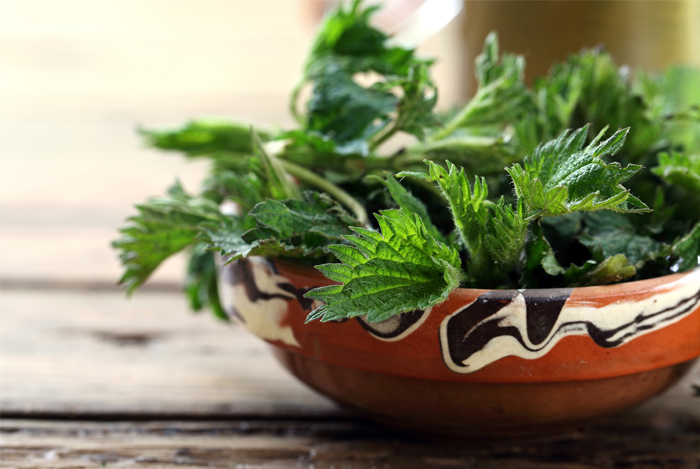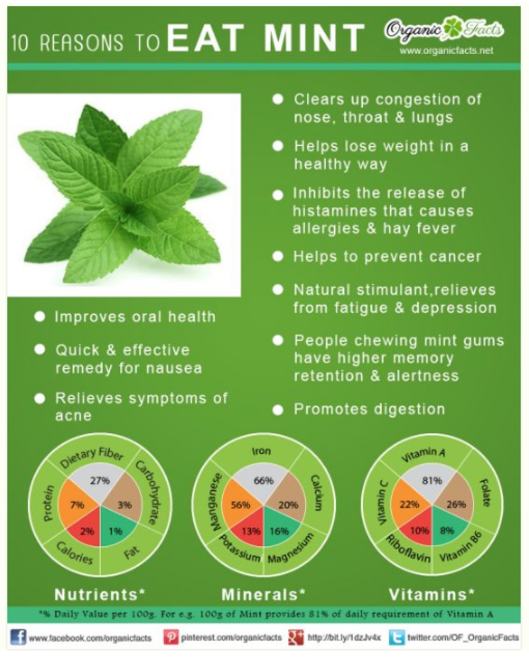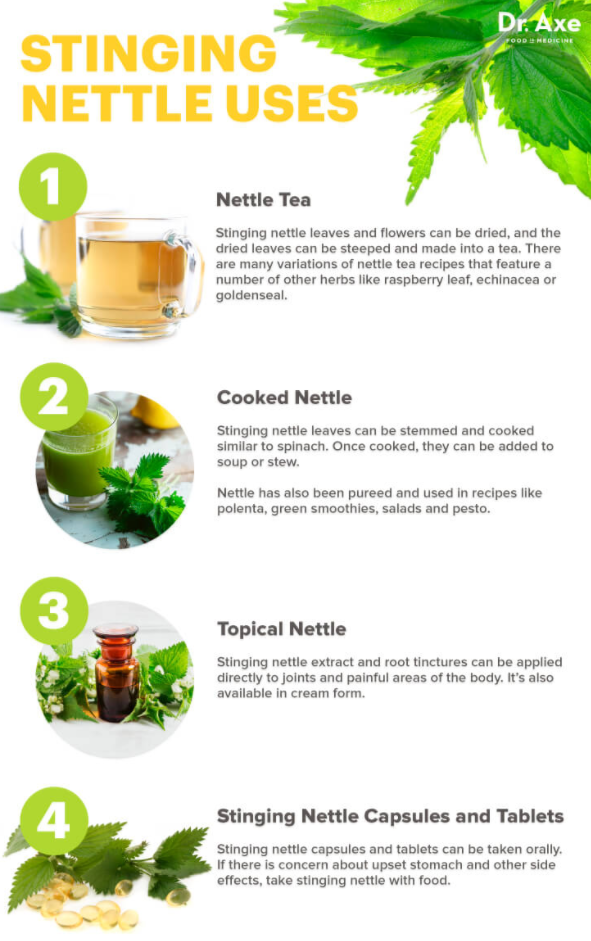Do you make a conscious effort to add herbs to your diet?
For most Americans, the answer is no.
According to research presented in the US National Library of Medicine, only 18% of Americans use herbal medicine, which is essentially supplementing with herbs. This means that roughly 82% of us are missing out on the major health benefits herbs pack.
Look, I understand why most of us don’t bother to use herbs everyday.
With so many to choose from, it can be downright intimidating to find the right ones that not only taste great, but also provide nutrition for your body.
To help you out, we’ll be discussing five of the best herbs for your health in today’s article. We’ll even go over a few pointers on how to incorporate them into your already healthy diet.
Let’s start with one of my favorites.
1. Cilantro

The number one herb I always recommend to my clients—many of whom are herb-newbies—is cilantro. This is the perfect starter herb since it’s low-calorie, packed with flavor, and super easy to use.
On top of that, cilantro has tremendous health benefits such as:
- High amounts of antioxidants, essential oils, dietary fiber, and vitamins, which can help reduce LDL (bad cholesterol) levels
- A good source of minerals like calcium, iron, magnesium, and potassium to support heart rate and blood pressure regulation as well as red blood cell production
- Rich source of folic acid, niacin, beta carotene, vitamin C (powerful antioxidant), riboflavin, vitamin A, and vitamin K, which can protect the lungs and mouth from certain cancers as well as protect the brains of Alzheimer’s patients from further neuron damage
Now, because cilantro is considered a tender herb, you’ll want to store it in its whole form to maximize its flavor. This means you just need to separate the leaves from the stem and you’re good to go.
You can lightly chop the leaves with a sharp knife or you can use your hands to loosely break them apart. Be careful whenever you chop your cilantro; if you use a knife that’s too dull or if you chop it to death, you’ll lose a good portion of the flavor.
Once you chop your cilantro, add the fresh leaves directly to your dishes as a raw herb or toss them in right before you finish cooking. As long as you don’t leave them in too long, you’ll reap their powerful and delicious bite.
Cilantro also compliments lime nicely making it an excellent addition to fresh guacamole or salsa, Mahi tacos, fish dishes, fresh salads, and even homemade veggie dips.
2. Mint

Mint is another easy-to-use tender herb that will fit in perfectly with your healthy diet—and I’m talking about doing more than just adding it to your Mojitos!
Similar to cilantro, mint has “one of the highest antioxidant capacities of any food,” according to Megan Ware of Medical News Today. This means that mint can help stop cancer cells from forming and spreading.
Furthermore, mint can also aid digestion.
In one study conducted at the University of Adelaide, researchers discovered that peppermint ignites an “anti-pain” property in the colon, which subsequently soothes inflammatory pain throughout the gastrointestinal tract, making it a natural remedy for irritable bowel syndrome.
Those without IBS can still benefit from eating more mint.
See, mint helps promote digestion; it can ease the gas and bloating that some of us experience after a big meal.
Here’s how it works:
“Peppermint makes the flow of bile more efficient, which means you digest your food more quickly, it also helps you relax the muscles in your digestive tract,” according to research done at the University of Maryland Medical Center.
Some additional benefits of eating more mint include:
- Nausea and headache relief
- Decongestion
- Better skin
- Asthma relief
- Less depression and fatigue
- Improved memory retention
- Weight loss
Can you see why I’m such a mint fan? It does so much more than simply flavor your sugary rum drinks.
Adding mint to your meals is just as easy as incorporating cilantro.
You can use the leaves whole by boiling some water and creating a fresh mint tea or you can add the leaves directly to your protein shakes to mix things up. Toss a few sprigs in your cold water bottle with sliced cucumber and lemon and you’ll definitely look forward to drinking more water throughout the day.
3. Oregano

Oregano is another powerhouse of antioxidants. Dr. Mercola mentions that oregano’s antioxidant levels contain “42 times the antioxidant punch of apples.”
Just like mint, this mighty herb can help prevent the growth of colon cancer cells and may even promote cell death in cancerous cells.
Another study found that these anti-cancer properties can extend to other forms such as skin, breast, prostate, and leukemia.
Oregano has also been studied for its antifungal and antibacterial properties.
One group of researchers proved that an essential oil of oregano was effective against 41 strains of a food pathogen known as Listeria monocytogenes.
A team of researchers found that oregano has the ability to kill MRSA, a tough-to-beat skin infection that is commonly contracted in hospitals.
Oregano can also help your digestion due to its high fiber content. And it’s amazing for bone health because it’s loaded with essential vitamins and minerals.
Your heart will love oregano thanks to its natural omega-3 fatty acids. These reduce inflammation and prevent heart attacks and strokes, among other conditions.
As for cooking with it, oregano actually works well in a variety of foods. Since you can use it in its fresh or dried form, there are tons of options to fit your cooking repertoire.
Sprinkle oregano over chicken or add it to your burgers for an unexpected, yet delightful seasoning, as Emma Christensen points out on the Kitchn. Christensen also teaches her readers how to use oregano as a pesto—talk about a clever, nutritious twist on a classic!
The next two herbs on our list may not be as common as the first three, but their health benefits are just as important.
4. Stinging Nettle

For those suffering from urinary issues such as an enlarged prostate, frequent urination, painful urination, irritable bladder, or an inability to urinate, stinging nettle will be your best friend, especially when combined with saw palmetto.
According to the University of Maryland Medical Center:
“Stinging nettle root is widely used in Europe to treat BPH [benign prostatic hyperplasia, or enlarged prostate] and… is comparable to finasteride,” which is a medicine commonly used to treat such issues.
You guys know I get really excited when herbs are proven to be just as effective as man-made or lab-created medicine so this is a big win to me.
Dr. Axe points out that stinging nettle can also be used topically to reduce arthritic pain in your hands, knees, hips, and spine. When it’s combined with anti-inflammatory drugs that are taken orally, you’ll be fighting pain from both inside and out.
You can also use stinging nettle topically to treat dry, itchy skin that comes from eczema.
Now, unlike with cilantro, mint, and oregano, you probably won’t want to consume stinging nettle as is. After all, if you did, you’re likely to feel a “stinging” sensation as soon as it touches your tongue—yikes!
The only kind that’s safe to eat is young stinging nettle leaves. You could steam these or sautee them just like you would spinach.
However, it’s much easier (and tastier) to consume stinging nettle as a tea, extract, or in supplement form.
5. Milk Thistle

Milk thistle may be another unfamiliar herb for you, but it certainly deserves a spot on your radar.
For starters, this herb contains a plethora of antioxidants to fight cell damage caused by free radicals.
It’s also been studied for its ability to pull out harmful toxins from the body. Harboring these toxins in your body can lead to the development of cancer, diabetes, kidney stones, gall bladder issues, high cholesterol, and even skin damage, as pointed out by Dr. Axe.
While more research is needed, preliminary studies have also found that milk thistle may help:
- Lower bad cholesterol levels
- Improve diabetes by decreasing blood sugar levels
- Treat alcoholic liver disease, acute and chronic viral hepatitis, and toxin-induced liver diseases
- Reduce inflammation
To take advantage of all milk thistle has to offer, you can enjoy it as a tea, diluted tincture, in your salads, and mixed in with your protein smoothies.
It may be a little hard to find at your local grocer so a trip to the health food store is probably in order here.
Now that you have a better understanding of these incredible herbs, plus a few tips on how to incorporate them into your diet, you’ll be able to add lots of healthy antioxidants and powerful nutrients to your meals for almost zero calories.
I recommend starting with the first three herbs on my list since you can find them at almost any grocery store. As you get comfortable with those, you can branch out to stinging nettle and milk thistle. Trust me, your body will thank you for choosing these natural herbs and you’ll be shining in good health.
Have you tried all of the herbs on this list? If not, which one will you try first? Share your thoughts with me in the comments!
The post Get Back to Nature: The Best Herbs for Your Body appeared first on Nutrition Secrets.
http://www.nutritionsecrets.com/get-back-to-nature-the-best-herbs-for-your-body/

No comments:
Post a Comment